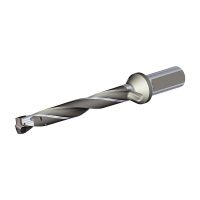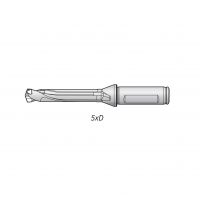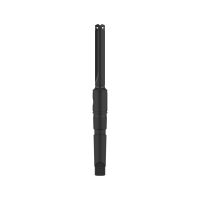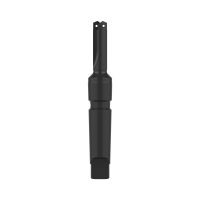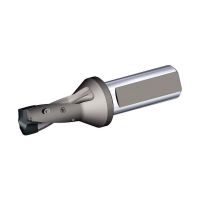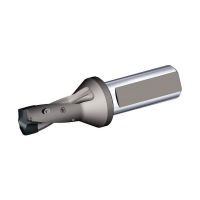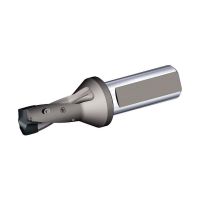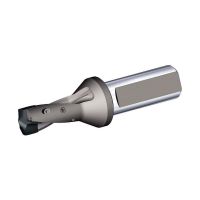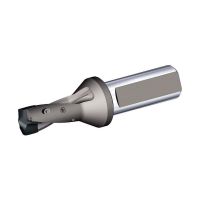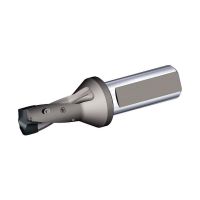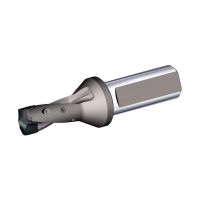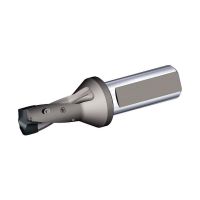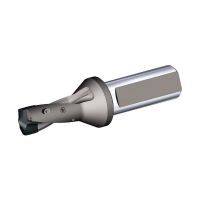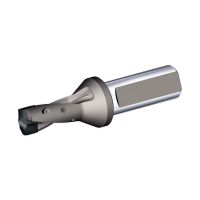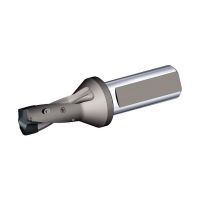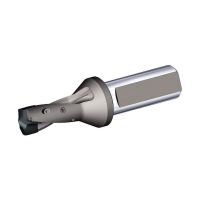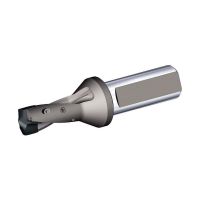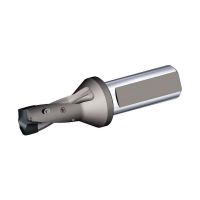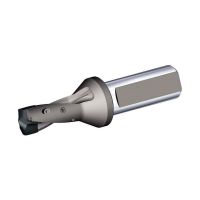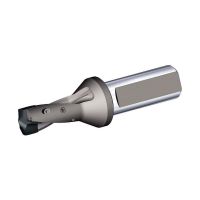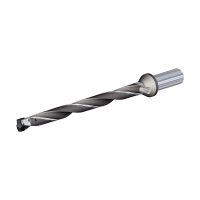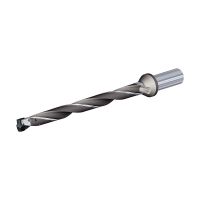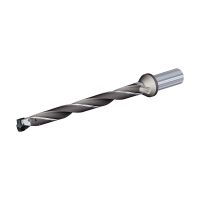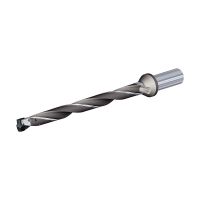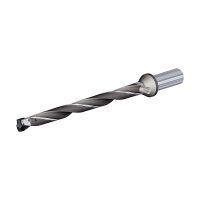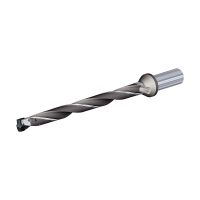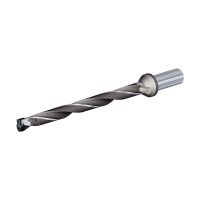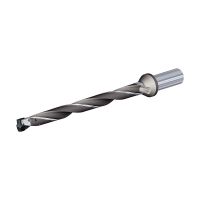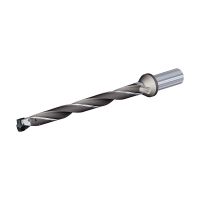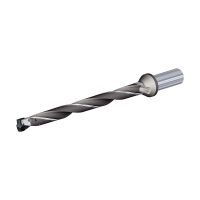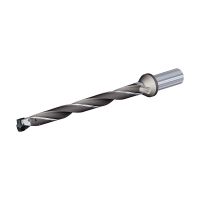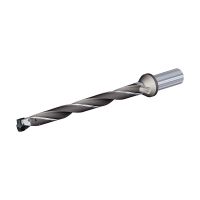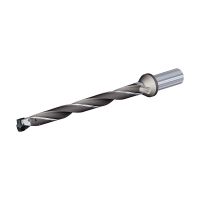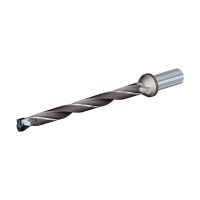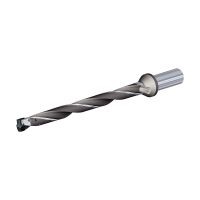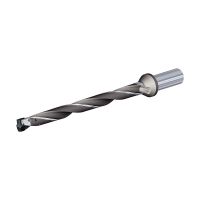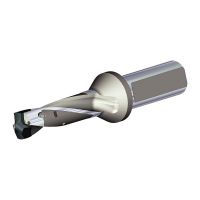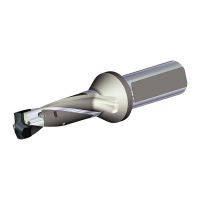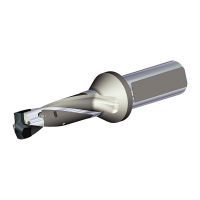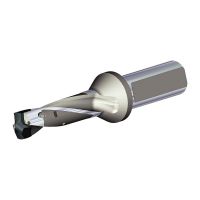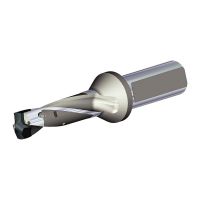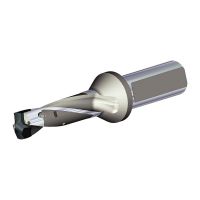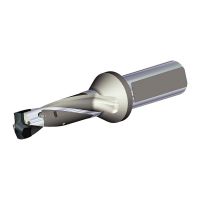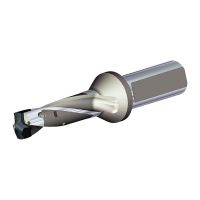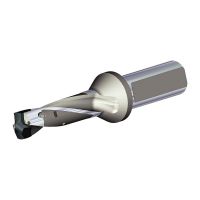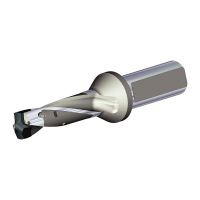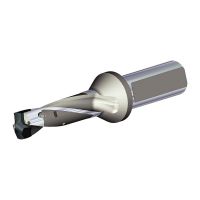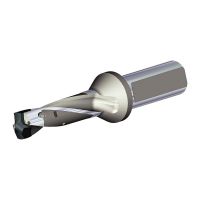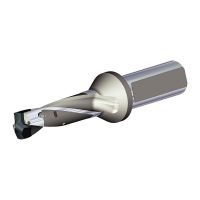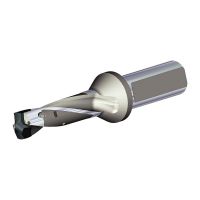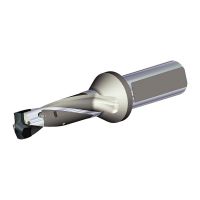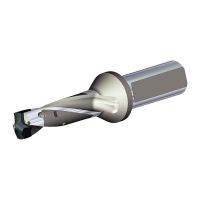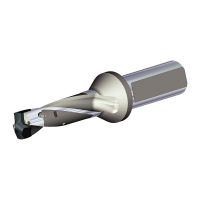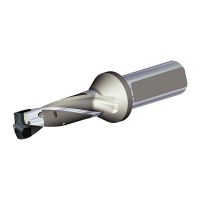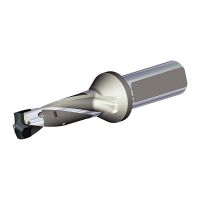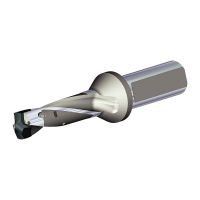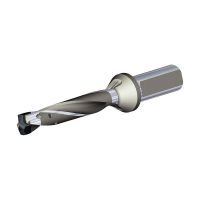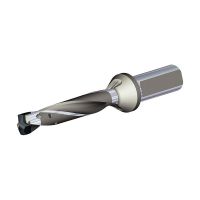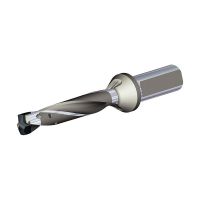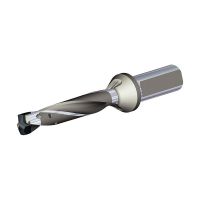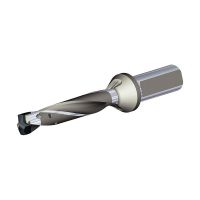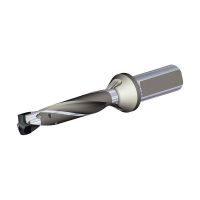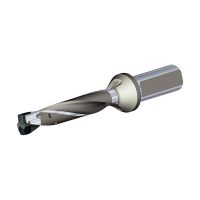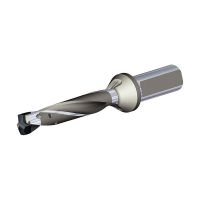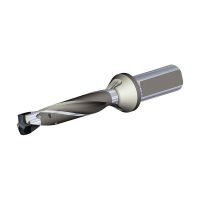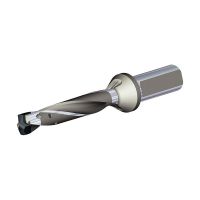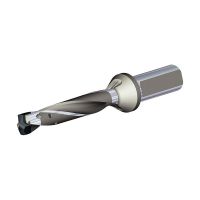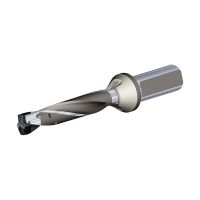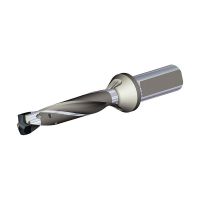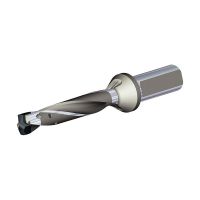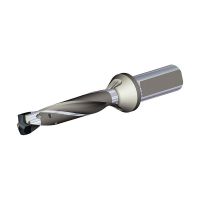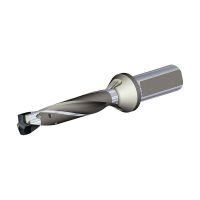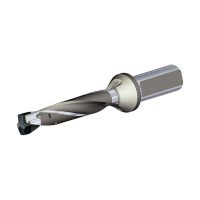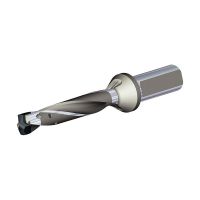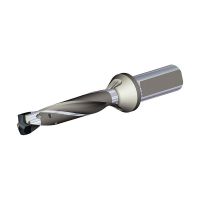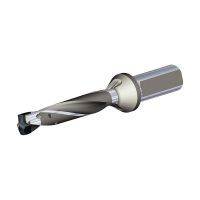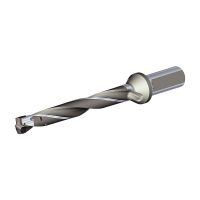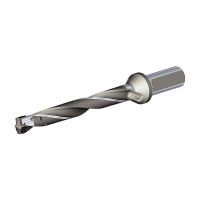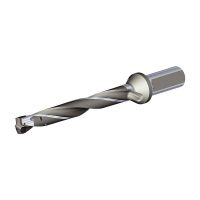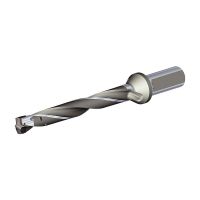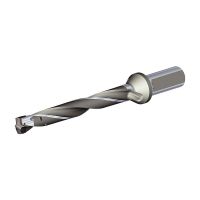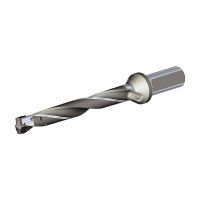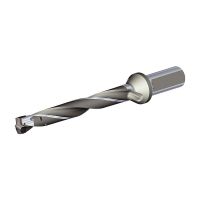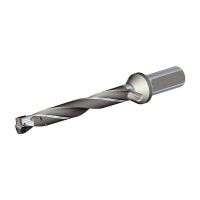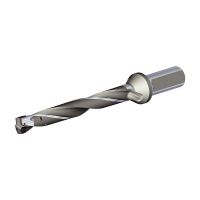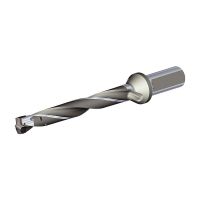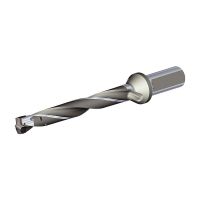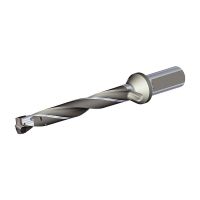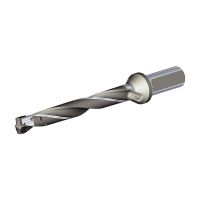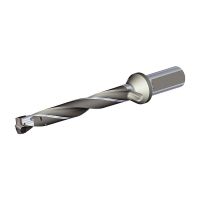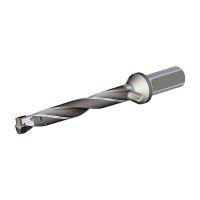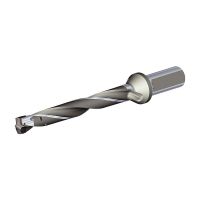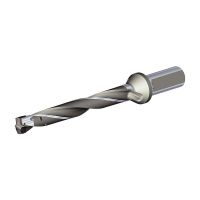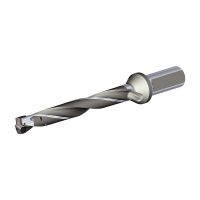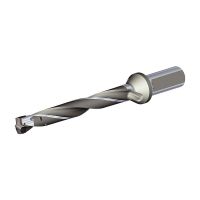The Do's, The Dont's, Tips & Hints
The most common drill type we recommend for deep hole drilling (beyond 8xD) is a straight fluted holder, paired with a cobalt high speed steel insert, unless very hard material is being drilled. The reason to avoid carbide inserts is simply that the longer your drill bit, the less accurate and more prone to chatter it becomes at the business end – and brittle ‘ol carbide just doesn’t take kindly to that combination!
The micro geometry of the insert is also an important consideration. A good geometry to try for deep holes is the AMEC “TC” geometry. This is designed to aid in chip formation at lower feed rates. This is helpful in deep holes due to the smaller chip being lighter and easier to move, coupled with the fact there are less chips being created due to the reduced penetration rates.
Going for a straight rather than a helical flute holder actually becomes an advantage to chip excavation in deep holes, as it gives a clear exit path for high pressure coolant or air fed through the tool, taking the chips with it. It is also highly recommended to start off your hole using a same-diameter stub drill to make a pilot hole, usually to 2xD depth. This is particularly important in horizontal boring situations, where even large diameter long drills can ‘sag’ under their own weight, leading to inaccurate holes and potential tool breakage.
Slowly rotating the tool before entering the cut helps to minimize the sag effect.
Speeds and feeds for deep holes must be correct. Of course, there are numerous of these depending on the application, so we are able to supply the applicable specifications per job, but as a general rule of thumb they call for a slight reduction in speed and possibly feed when drilling deep holes.
Coolant is a vital component of successful deep hole drilling. The old saying goes to be successful in drilling, you need to form the chip then get it out of the hole. We generally talk about the pressure available to the machine when drilling holes under 25mm. This is because the small outlet holes on the holder will require high pressure to deliver the flow you need to keep the chip moving.
The last thing to consider is to listen to the tool as it cuts. If you hear grumbling sounds and the chips are not coming out of the hole, things are about to go bad! Also, keep an eye on the load meter of the machine, as it should be fairly steady once it begins cutting. If you notice the meter getting erratic while in the cut, it is another indicator that the chips are not flowing properly. The way to fix this problem would be to increase the flow, or reduce penetration rates until the chip no longer clogs.
GIVE US A CALL TO ORDER OR FOR MORE GREAT FREE ADVICE, 0508 124 125.

